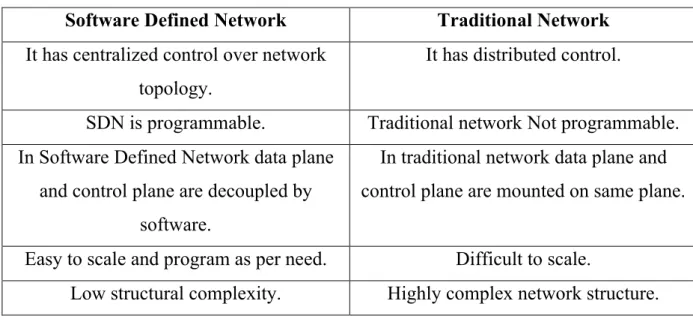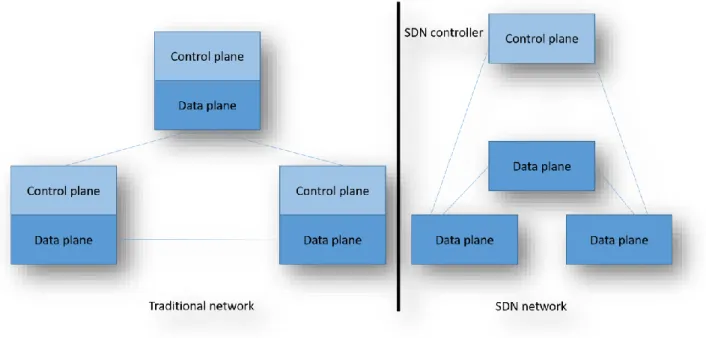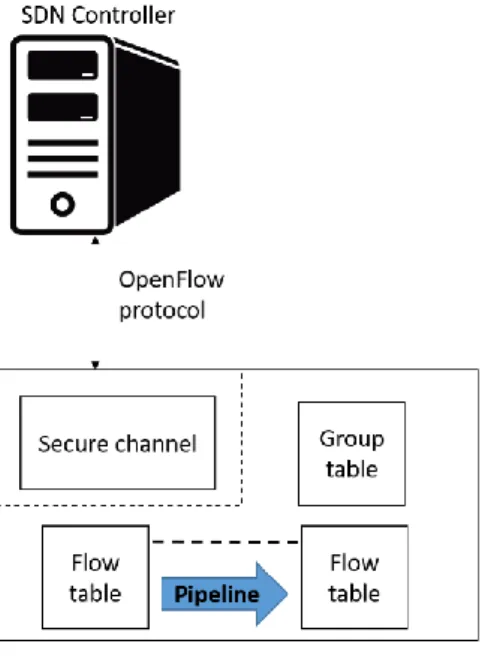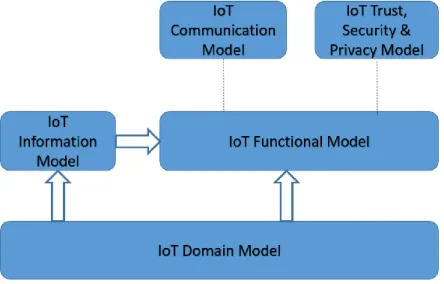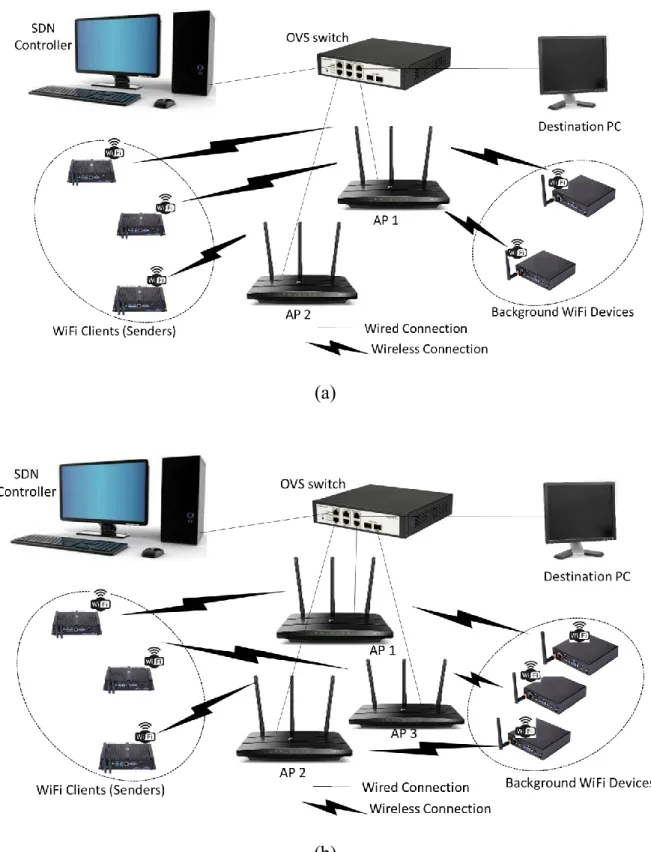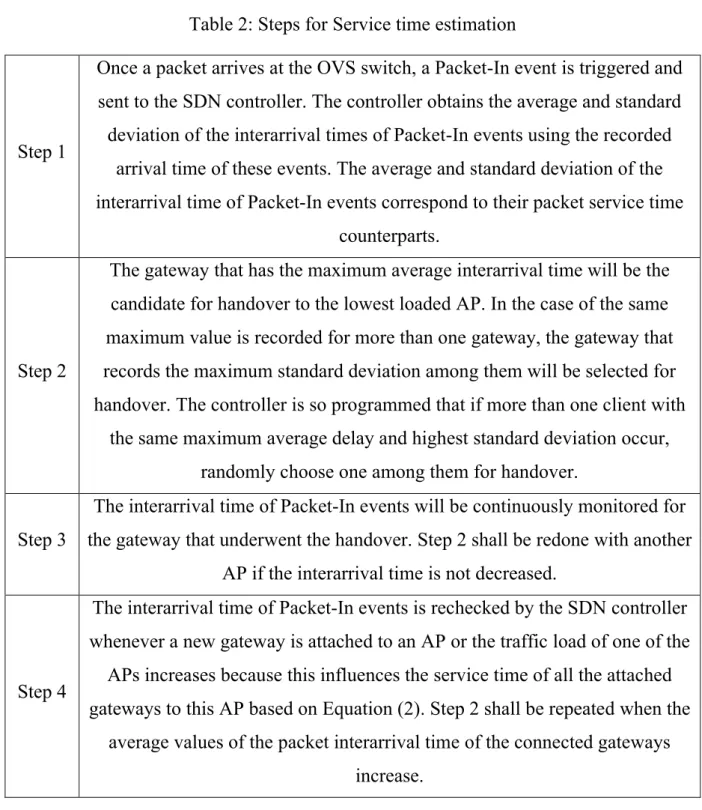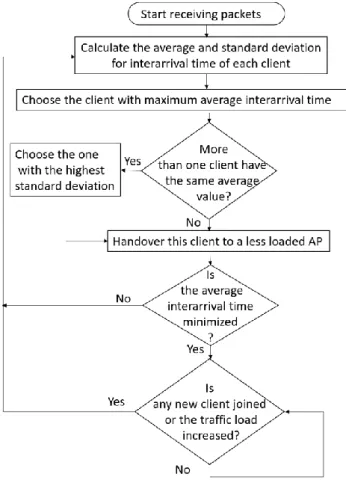Emirates University (UAEU), and the author of this thesis titled “Quality-of-Service Provisioning for Smart City Applications Using Software-Defined Networking”, hereby solemnly declare that this is the original research work done by me under the. Internet-of-Things (IoT) connections mainly use WiFi standards to form the arteries of a smart city.
Introduction
- Overview
- Statement of the Problem
- Example Scenario in Real Life
- Problem Statement
- Research Objectives
- Potential Contributions and Limitations of the Study
In many smart city initiatives, the city is covered by many WiFi networks with overlapping coverage. This thesis becomes useful in the implementation of delay-sensitive smart city services using SDN, as SDN has already been realized as the future of wireless/wired networks.
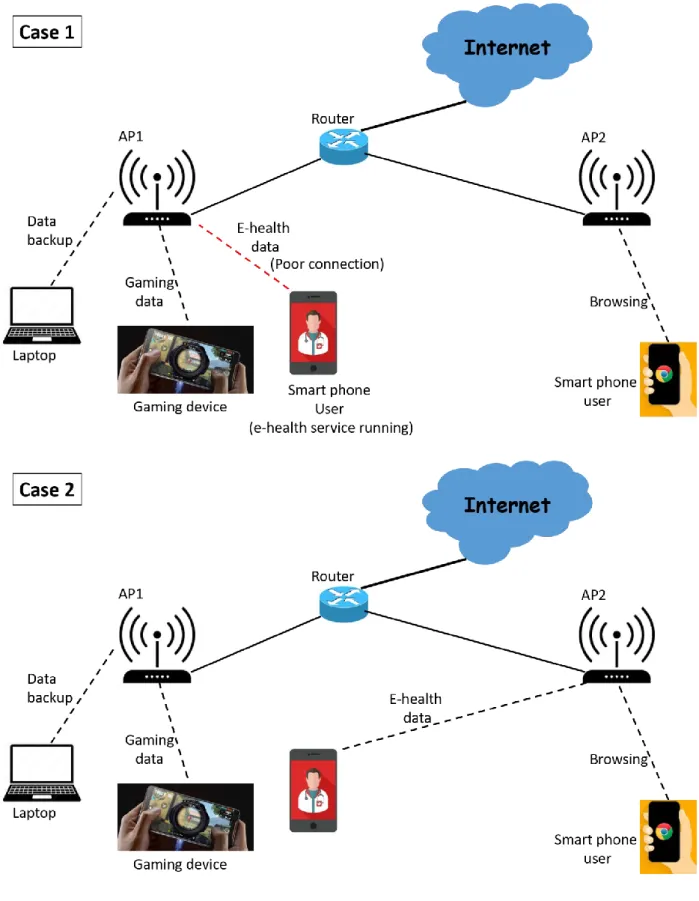
Literature Review
General Background
- WiFi AP Selection
- AP Load Balancing
- Software Defined Networking
- SDN v/s Traditional Network
- The OpenFlow Specification
- Smart City
- Internet of Things (IoT)
2002) shows that even when a new AP was added to a cell to relieve an overloaded AP, there was no change in the network. In the decentralized method, each client makes a decision regarding AP selection based on some metrics such as link quality and received signal strength. In a study by Kim et al. 2017), the Wifi client estimates the interference level of APs based on metrics obtained from signal strength variance and beacon collision rate, unlike the traditional method where the RSSI metric is usually used.
An optimal load balancing system must be adaptive in nature; it should be able to change its behavior according to changing load in the network. Range extender selection for home APs is addressed in the study by Adame et al. However, this method is more like a routing mechanism to avoid congested nodes in the route.
Today's networks are very complex as each issue or protocol in the network is addressed individually which in turn resulted in the addition of many middle devices such as multiple switches, firewalls, web authentication portals, and so on. Specifically, devices (for example, switches and routers) in the data plane perform packet forwarding based on rules installed by controllers. Moreover, network security and performance issues are another major problem in today's global network.
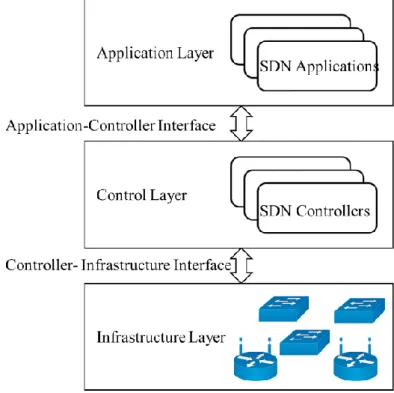
Related Works
- SDN in AP Selection and Load Balancing
- SDN in Smart City
- SDN in Delay QoS
The introduction of Software Defined Wireless Sensor Networks (SDWSN) to ease management complexity in WSNs is also an added advantage (Jurado-Lasso et al., 2022). A study by Cedillo-Elias et al. 2018) is an example of how secure and reliable e-government services are possible with the use of SDN and the cloud. An SDN-based framework for satellite communication in smart cities is proposed by Priyadarsini et al.
In a study by Alzubi et al. As of 2022, sensitive data from IoT devices in a smart city is sent from IoT to the SDN controller and then to the cloud, where the application resides. SDN is currently being realized as the primary technology to simplify network control and promote QoS provisioning (Dezfouli et al., 2019). With the use of SDN along with fog computing and blockchain security, a secure and reliable low latency decision making algorithm is proposed by Ren et al. 2022) to ensure key QoS in the healthcare IoT.
Research conducted by Aswanth et al. 2021) try to ensure minimum end-to-end delay and bandwidth in telemedicine through flow modifications in flow tables of switches using SDN. By using SDN, flexibility in network configuration and resource control can be achieved to a great extent (Kreutz et al., 2015). Furthermore, most of the SDN-based previous studies on this topic either probe the network for link delay information (Aswanth et al., 2021) or periodically retrieve network data from switches or/and from the network.
Analysis and Proposed Algorithms
- System Model
- Experimental Setup
- Hardware Equipment
- Software Packages
- Ryu
- Open vSwitch (OVS)
- Empower-5G Framework
- Light Virtual Access Point (LVAP)
- Proposed Algorithms
- Based on Service Time Estimation
- Using M/G/1 Analysis
- Finding the Least-Loaded AP
- Experimental Procedure
Lightweight virtual access points (LVAP) are one of the most popular abstraction-simplifying handover tasks. The third algorithm selects the least loaded AP to which the port handover, selected by either of the first two algorithms, will be performed. Hence, the end-to-end delay variation is captured by the service time variation (i.e., the longer the service time, the longer the end-to-end packet delay).
A generalization of the average service time E[Vtj] of IEEE 802.11 mentioned in (Abdrabou & Zhuang, 2008) can be obtained as. The controller obtains the mean and standard deviation of the interarrival times of Packet-In events using the recorded data. The mean and standard deviation of the interarrival time of Packet-In events corresponds to their packet service time.
In case the same maximum value is recorded for more than one gateway, the gateway recording the maximum standard deviation among them will be selected for handover. The inter-arrival time of Packet-In events is checked again by the SDN controller when a new gateway is associated with an AP or the traffic load of one of them. By detecting the arrival time of packet-in events using OVS, the SDN controller calculates the mean and standard deviation of these events.
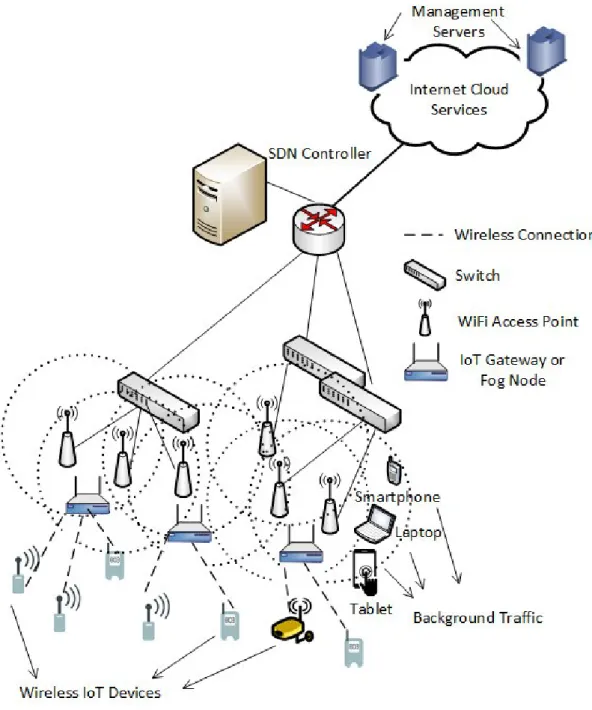
Results and Discussions
Results
- Handover Based on Service Time Estimation
- Handover Based on M/G/1 Analysis
- Handover to AP with Least Load
As shown in Figure 12(a), there is a noticeable difference in the end-to-end packet delay between the pre-handover and post-handover cases. Figure 12(b) reveals that the end-to-end delay variation is affected by the change in the packet interarrival time at the controller in general. However, with large amounts of background traffic, a small change in packet interarrival times results in a significant change in end-to-end delay.
As Figure 13(a) shows, the algorithm is successful in significantly reducing the end-to-end delay of packets after handover. However, the difference between the end-to-end delay before and after the handover decreases as the volume of background traffic increases. The results shown in Figure 14(b) confirm that the change in end-to-end packet delay is not reflected in the intermediate packet arrival.
In addition, a comparison between the measured end-to-end delay before handover and the estimated end-to-end delay calculated by the SDN controller is depicted in Figure 13(c) . The percentage difference in the traffic load between the available APs is varied in both figures, and the corresponding end-to-end packet delay is recorded. It is clear from Figure 15(a) and Figure 15(b) that the reduction in the end-to-end delay packet delay after handover is significantly greater when the AP is selected using the proposed.
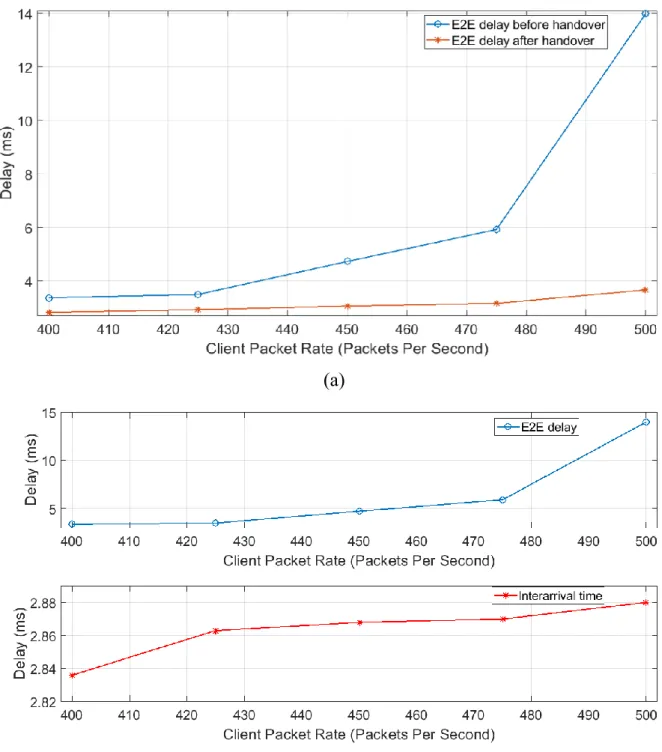
Discussion
While using M/G/1 analysis for handover decisions, a trend similar to that of the service time estimation can be observed. Gateways' traffic exhibited a lower end-to-end packet delay after handover based on M/G/1 analysis, as shown in Figure 13(a) and Figure 14(a). However, the packet interarrival time at the SDN controller does not vary significantly with increasing either the gateway traffic rate (Fig. 13(b)) or the background data rate (Fig. 14(b)).
This is due to the randomness of Poisson traffic, which makes the queuing delay affect the end-to-end delay more than the service time of the shared IEEE 802.11 channel. As shown in Figure 15, choosing the AP based on load gives much better performance in terms of end-to-end delay. It is worth noting that the mobility of IoT devices does not affect the performance of the proposed algorithms.
On the other hand, if an IoT gateway changes its location or is deployed elsewhere, this is considered limited mobility as it will still be under overlapping coverage of the other city APs. This also does not affect the operation of the proposed algorithms, as they mainly run on the SDN controller based on data received from the APs. Other than that, the main concern would be the overload of the SDN controller while calculating delay calculations to make handover decisions.
Conclusion and Future Scope
Conclusion
Graphs were drawn to compare the variation of the end-to-end packet delay with the interarrival time of data packets. It was found that the inter-arrival time of data packets indeed followed the end-to-end delay. This algorithm uses M/G/1 analysis to estimate the end-to-end packet delay by estimating the service time statistics at the SDN controller.
Nevertheless, there was no correlation between service time and end-to-end delay both in the case of constant customer rate and constant background load. The measured end-to-end delay was compared with the calculated values using M/G/1 analysis, there was significant difference in their values. The randomness of Poisson traffic also affected the end-to-end delay to be more dependent on the queuing delay, and therefore a plot comparing interarrival time and end-to-end delay has shown no particular relationship between those two.
This indicates that for the poison arrival process, the handover decision cannot be made based on intermediate arrival time; it should be based on the Pollaczek-Khinchine (PK) formula. All in all, this study showed that SDN controllers can effectively monitor the networks and make suitable decisions to change the network topology for better end-to-end. This enables smart city applications that require low packet latency, such as e-health systems, to be well-founded and reliable.
Future Scope
Several other QoS requirements for smart city services can be explored and implemented in the same way. Network security, system responsiveness, reliable data traffic, throughput, etc. are some of several QoS requirements for smart city applications. Good functioning of services is extremely important for a proper smart city establishment, otherwise the public will lose confidence in it.
A comprehensive study of different objectives and solutions of controller placement problems in software-defined networks. Local and metropolitan area networks – Specific requirements – Part 11: Wireless LAN Medium Access Control (MAC) and Physical Layer (PHY) Specifications Amendment 1: Radio resource measurement of wireless LANs. Local and metropolitan area networks – Specific requirements – Part 11: Wireless LAN Medium Access Control (MAC) and Physical Layer (PHY) specifications Amendment 8: IEEE 802.11 Wireless network management.
Research on Machine Learning Software-Defined Wireless Sensor Networks (ML-SDWSN): Current Status and Major Challenges.
